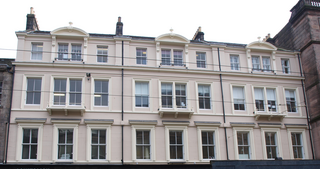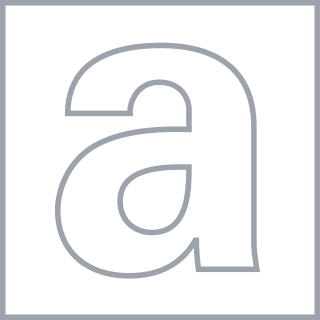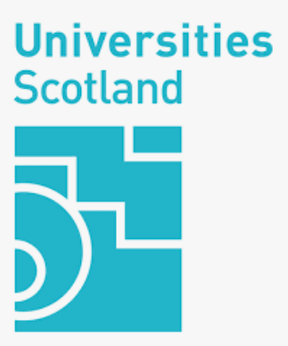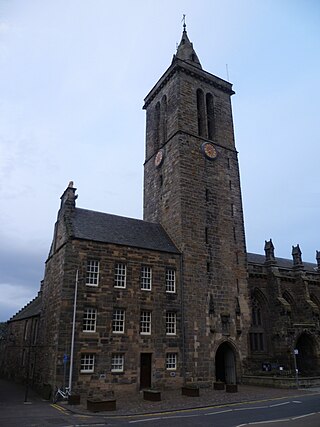Related Research Articles

The University of St Andrews is a public university in St Andrews, Scotland. It is the oldest of the four ancient universities of Scotland and, following the universities of Oxford and Cambridge, the third-oldest university in the English-speaking world. St Andrews was founded in 1413 when the Avignon Antipope Benedict XIII issued a papal bull to a small founding group of Augustinian clergy. Along with the universities of Glasgow, Edinburgh, and Aberdeen, St Andrews was part of the Scottish Enlightenment during the 18th century.
Education in the United Kingdom is a devolved matter with each of the countries of the United Kingdom having separate systems under separate governments. The UK Government is responsible for England, whilst the Scottish Government, the Welsh Government and the Northern Ireland Executive are responsible for Scotland, Wales and Northern Ireland, respectively.
Education in Scotland is the responsibility of the Scottish Government, and is overseen by its executive agency, Education Scotland.

Matriculation is the formal process of entering a university, or of becoming eligible to enter by fulfilling certain academic requirements such as a matriculation examination.
A state school or public school is a primary or secondary school that educates all students without charge. Such schools are funded in whole or in part by taxation.
The National Certificate is a higher education qualification in a technology discipline offered by higher institutions across the globe. Each country has its own specifications about the certificate.
The Scottish Certificate of Education was a Scottish secondary education certificate, used in schools and sixth form institutions, from 1962 until 1999. It replaced the older Junior Secondary Certificate (JSC) and the Scottish Leaving Certificate (SLC), and it was the Scottish equivalent of the General Certificate of Education, used in England, Wales and Northern Ireland. One primary distinction between the Scottish Leaving Certificate and the Scottish Certificate of Education was that the latter had less strict regulations in terms of compulsory subjects and workload of the individual curricula.

St. Andrews University is a private Presbyterian university in Laurinburg, North Carolina. It was established in 1958 as a result of a merger of Flora MacDonald College in Red Springs and Presbyterian Junior College; it was named St. Andrews Presbyterian College from 1960 until 2011 when the college changed its name to St. Andrews University. That same year, it merged with Webber International University of Babson Park, Florida. It is also home to the St. Andrews Press. In 2013, St. Andrews added its first graduate program, an MBA in business administration.
In some Scottish universities a Master of Arts is the holder of a degree awarded to undergraduates, usually as a first degree. It follows either a three-year general or four-year Honours degree course in humanities or social sciences and is awarded by one of several institutions.

The Edinburgh Association for the University Education of Women (EAUEW), originally known as the Edinburgh Ladies' Educational Association (ELEA), campaigned for higher education for women from 1867 until 1892 when Scottish universities started to admit female students. For nearly a quarter of a century it arranged its own classes for women with lecturers from Edinburgh University, and it was connected with a wider campaign across Europe to open universities to women students.
A Lady Literate in Arts (LLA) qualification was offered by the University of St Andrews in Scotland for more than a decade before women were allowed to graduate in the same way as men, and it became popular as a kind of external degree for women who had studied through correspondence, or by attendance at non-university classes. Although awarded as a diploma, in terms of academic standard, it was equivalent to the Master of Arts.

St Leonards School is a private boarding and day school for pupils aged 4–19 in St Andrews, Fife, Scotland. Founded in 1877 as St Andrews School for Girls Company, it adopted the St Leonards name upon moving to its current premises, the site formerly occupied by the University of St Andrews’ St Leonard's College, in 1883.

The A-Level is a subject-based qualification conferred as part of the General Certificate of Education, as well as a school leaving qualification offered by the educational bodies in the United Kingdom and the educational authorities of British Crown dependencies to students completing secondary or pre-university education. They were introduced in England and Wales in 1951 to replace the Higher School Certificate. The A-level permits students to have potential access to university if their grade is of satisfactory quality.

The history of education in Scotland in its modern sense of organised and institutional learning, began in the Middle Ages, when Church choir schools and grammar schools began educating boys. By the end of the 15th century schools were also being organised for girls and universities were founded at St Andrews, Glasgow and Aberdeen. Education was encouraged by the Education Act 1496, which made it compulsory for the sons of barons and freeholders of substance to attend the grammar schools, which in turn helped increase literacy among the upper classes.

St Andrews International School Bangkok is a British International School founded in 1997 that provides a British-style education and curriculum to children ranging from Foundation Stage 1 to High School. St Andrews is a Nord Anglia Education operated school and part of a network of 78 schools that spans across 31 countries. St Andrews has over 2000 students representing an international community of 50+ nationalities. St Andrews is an inclusive school that welcomes students of all abilities to be ambitious and learn in a diverse and safe environment.

Universities Scotland was formed in 1992 as the Committee of Scottish Higher Education Principals (COSHEP) adopting its current name in 2000, when Universities UK was also formed. It represents 19 autonomous higher education institutions, 16 of them with University status and three other higher education institutions in Scotland. The Convener serves a two-year term of office. As of 2022, this post is held by Professor Sir Gerry McCormac, principal of the University of Stirling, while Alastair Sim has served as the organization's Director since 2009.

Education in Medieval Scotland includes all forms of education within the modern borders of Scotland, between the departure of the Romans from Britain in the fifth century, until the establishment of the Renaissance late fifteenth century and early sixteenth century. Few sources on Scottish education survived the Medieval era. In the early Middle Ages, Scotland was an oral society, with verbal rather than literary education. Though there are indications of a Gaelic education system similar to that of Ireland, few details are known. The establishment of Christianity from the sixth century brought Latin to Scotland as a scholarly and written language. Monasteries served as major repositories of knowledge and education, often running schools.

Education in Scotland in the twentieth century includes all forms of organised education in Scotland, such as elementary, secondary and higher education. The centre of the education system became more focused on Scotland throughout the century, with the Scottish Education Department partly moving north from 1918 and new departments created by the Scottish Executive after devolution.
References
- ↑ O'Connor, JJ; Robertson, EF. "The setting up of the Scottish Leaving Certificate". St Andrews: School of Mathematics and Statistics, University of St Andrews. Retrieved 22 March 2012.
- ↑ "Notes and news". British Journal of Educational Studies. 8: 65. doi:10.1080/00071005.1959.9973030.